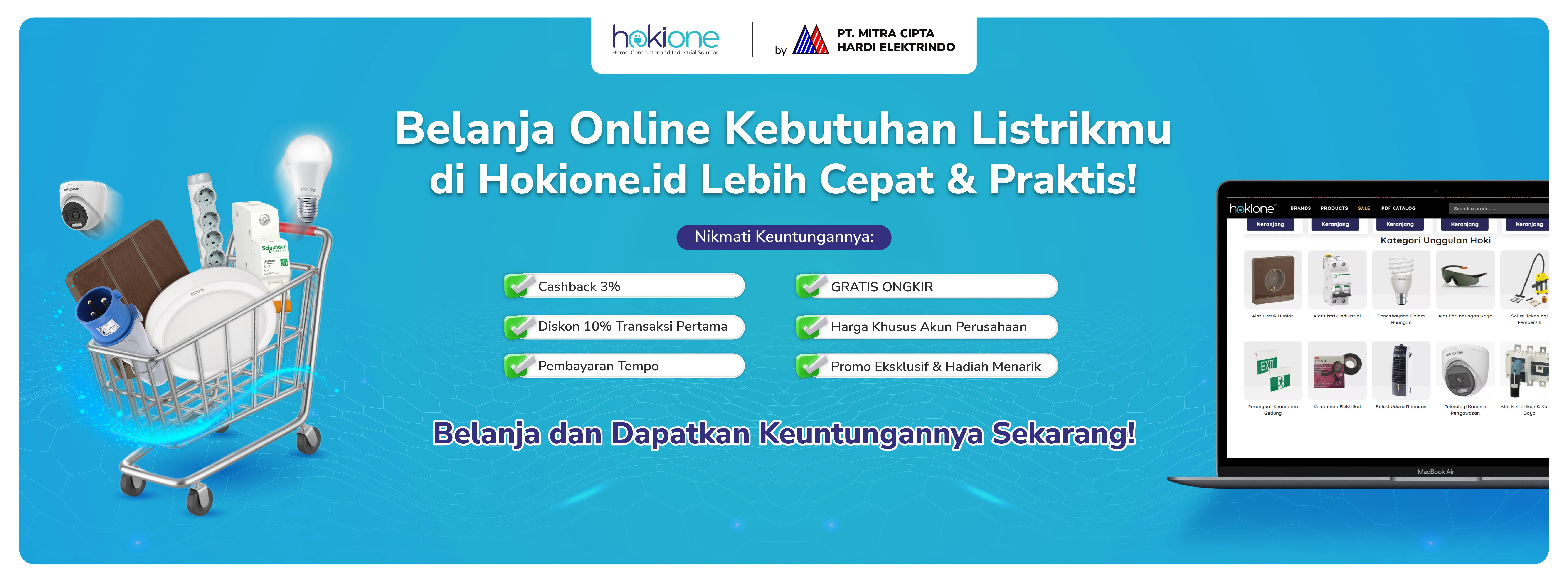Fungsi Terminal Block dan Cara Menggunakannya, Hubungkan Kabel Instalasi Listrik dengan Aman

Fungsi terminal block dan cara kerjanya penting untuk diketahui. Meskipun perangkat ini merupakan komponen kecil dalam sistem kelistrikan, keberadaannya dapat menjaga kelancaran sistem dan keselamatan operasional. Mari ita kupas tuntas tentang pengertian dan fungsi terminal block hingga jenis-jenisnya dalam instalasi listrik.
Baca Juga: 20 Nama Peralatan Listrik Lengkap dengan Fungsinya, Bisa Ditemukan di Rumah dan Kantor
Pengertian Terminal Block
Terminal Block adalah komponen listrik yang digunakan untuk menghubungkan dan mengamankan dua atau lebih kabel secara mekanis dan elektrik. Komponen ini biasanya terdiri dari rangkaian terminal yang diatur dalam sebuah blok atau modul, sebagai tempat koneksi kabel yang rapi dan terorganisir.
Fungsi Terminal Block
Fungsi utama Terminal Block adalah sebagai penghubung antara kabel-kabel listrik dalam sebuah sistem. Selain itu, terminal block juga membuat sambungan kabel menjadi aman dan efisien, menghindari kerusakan akibat kabel yang semrawut tak beraturan.
Dalam beberapa aplikasi, terminal block digunakan untuk mendistribusikan daya dari satu sumber listrik ke beberapa beban sambil menjaga sistem tetap rapi dan aman.
Beberapa jenis terminal block juga dilengkapi dengan fitur yang dapat memutuskan atau menguji sambungan tanpa harus melepas kabel sehingga membuat perawatan instalasi listrik menjadi lebih mudah dan pengguna dapat mendeteksi masalah pada kabel dengan lebih cepat.
Dengan fungsinya untuk mengamankan kabel-kabel secara terpisah, terminal block dapat mengurangi risiko korsleting atau kebakaran yang disebabkan oleh kontak antarkabel yang tidak diinginkan.
Jenis-Jenis Terminal Block
1. Screw Terminal Block
Screw terminal block adalah jenis terminal block yang paling umum. Pada jenis ini, koneksi kabel dilakukan dengan mengencangkan sekrup pada konduktor. Tipe screw terminal block sangat populer digunakan karena kokoh dan pemasangannya mudah.
2. Spring Clamp Terminal Block
Menggunakan mekanisme pegas untuk menjepit kabel, spring clamp terminal block menawarkan instalasi yang lebih cepat tanpa memerlukan alat khusus. Tipe terminal block ini sangat ideal untuk digunakan di instalasi listrik dengan kebutuhan koneksi yang sering.
3. Barrier Terminal Block
Didesain untuk memberikan isolasi fisik antara terminal, barrier terminal block ideal untuk aplikasi pada sistem listrik tegangan tinggi yang memerlukan keamanan ekstra.
4. Fuse Terminal Block
Tipe terminal block ini dilengkapi dengan sekering sehingga memberikan perlindungan tambahan pada sirkuit yang terhubung. Dengan fungsinya, fuse terminal block sangat berguna untuk dipasang di sistem listrik yang memprioritaskan perlindungan arus.
Cara Memasang Kabel ke Terminal Block
Untuk menggunakan terminal block, pertama-tama Anda perlu mengupas isolasi pada ujung kabel yang akan dihubungkan, sekitar 0.5 hingga 1 cm tergantung pada ukuran kabel dan terminal. Pastikan tidak ada serabut kabel yang lepas atau rusak, dan seluruh konduktor terbuka dengan rapi.
Pada screw terminal block, ujung kabel yang sudah dikupas dimasukkan ke dalam lubang terminal, kemudian sekrup dikencangkan dengan obeng hingga kabel terjepit. Selalu pastikan kabel tidak mudah terlepas dan tutup semua bagian logam tadi.
Pada spring crew terminal block, tekan pegas dengan obeng untuk membuka penjepit, kemudian masukkan ujung kabel ke dalam terminal lalu lepaskan tekanan agar pegas dapat menjepit kabel dengan kuat.
Pada barrier terminal block, kabel yang sudah dikupas dimasukkan ke dalam slot yang disediakan, pastikan penghalang yang ada di antara terminal memberikan isolasi dan jarak yang cukup.
Manfaat Menggunakan Terminal Block
1. Memudahkan proses instalasi dan pengelolaan kabel, menjadikan sistem lebih rapi dan terstruktur.
2. Dengan berbagai pilihan jenis, Terminal Block dapat disesuaikan dengan kebutuhan spesifik instalasi, baik itu untuk distribusi daya, pemutusan, atau proteksi.
3. Terminal Block mengurangi risiko korsleting dan kerusakan pada kabel, memberikan lapisan keamanan ekstra pada sistem kelistrikan.
Powered by Froala Editor

Baca Juga: 6 Penyebab Lonjakan Tegangan Listrik, Bagaimana Cara Mencegahnya?
Terminal Block Phoenix Contact
Terminal Block adalah komponen kecil namun penting dalam instalasi kelistrikan. Dengan fungsi utama sebagai penghubung dan pengaman kabel, serta berbagai jenis dan keunggulannya, terminal block menjadi solusi praktis dan efektif untuk menjaga sistem kelistrikan tetap teratur, aman, dan mudah dikelola.
Bagi Anda yang sedang merencanakan atau mengelola instalasi listrik, memastikan penggunaan Terminal Block yang tepat adalah langkah penting untuk memastikan keamanan di sistem listrik. Salah satu pilihan terminal block yang aman adalah Phoenix Contact.
Phoenix Contact menghadirkan terminal block yang menawarkan fleksibilitas tinggi dalam desain strip terminal dan instalasi listrik. Dengan teknologi koneksi yang bervariasi, Anda bisa mengombinasikan terminal block dengan bebas sesuai kebutuhan.
Selain itu, terminal block dari Phoenix Contact dilengkapi dengan fitur bridging dan testing melalui double function shaft, serta titik uji terintegrasi yang memudahkan pengujian tanpa perlu melepas konduktor.
Keunggulan lainnya, produk Phoenix Contact dilengkapi dengan aksesori bridging, penandaan, dan pengujian yang seragam, serta dukungan data digital yang luas sehingga saling terintegrasi. Terminal block Phoenix Contact adalah solusi ideal untuk efisiensi dan kinerja optimal dalam instalasi listrik Anda.
Fungsi terminal block dan cara pakainya bisa dengan mudah diterapkan pada rangkaian produk terminal block Phoenix Contact. Untuk keamanan instalasi listrik yang optimal, pilihan terbaik adalah perangkat terminal block dari Phoenix Contact yang bisa Anda dapatkan di Mitra Cipta Hardi Elektrindo dan Hokione, distributor resmi Phoenix Contact yang terpercaya memberikan produk asli dan jaminan garansi resmi di Indonesia.
Powered by Froala Editor
Related News



